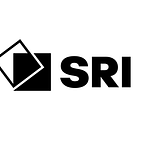75 Years of Innovation: Over the horizon radar
The wide aperture radar facility (WARF) was used for decades of over-the-horizon (OTH) research
The 75 Years of Innovation series highlights the groundbreaking innovations spanning from SRI’s founding in 1946 to today. Each week, SRI will release an innovation, leading up to its 75th anniversary in November 2021.
Over the horizon radar: how to see the OTHR side
Imagine being able to see around corners or over the horizon. This would undoubtedly be a useful skill if only to preempt an embarrassing meeting with a person you want to avoid. In this story, however, the horizon isn’t the one we see with our eyes. Instead, this is about the radar horizon, the furthest distance from an emitter that radar can detect.
Stanford University laid the groundwork for developing radar that can see over the horizon with its wide aperture research facility. SRI took over this development from Stanford in the late 1960s and, over the decade following, transformed the use of radio waves to detect faraway objects.
How radar’s horizon was expanded by SRI
Radar is an acronym for radio detection and ranging. In its most basic form, radar works by transmitting short burst radio signals from an antenna toward a chosen location. A receiver detects echoes from any objects that are in the path of the radio signal. The distance to an object is calculated from the time difference between the pulse transmission and the echo’s arrival.
Radar was first discovered by physicist Heinrich Hertz in 1886. Hertz realized that electromagnetic waves could be reflected from various objects, and he subsequently focused these waves into beams using reflectors. It took decades for this early radar to be developed into something practical and radar saw its first widespread use during World War II when used to track enemy aircraft.
While this basic radar was very useful, it had significant limitations. Radio signals move in straight lines and need a clear line of sight between the antenna and the object being detected. Interference and dispersion, caused by such things as weather, atmospheric conditions or other radio waves, can also reduce the distance radar signals can travel and generate false-positive identifications. At best, this radar was effective to the line-of-sight horizon.
Sensing objects beyond the radar horizon was a challenge and a scientific puzzle that SRI International helped solve, leading to the development of over the horizon radar (OTHR).
The first breakthrough paving the way to OTHR came from the institution that founded SRI, Stanford University. In the 1960s, Stanford established the wide aperture research facility (WARF). Soon after, SRI took over operation of the WARF and began its innovative work on OTHR. The WARF consisted of two separate sites; a transmitter site located in Lost Hills, California, and a receiver site, in Los Banos, California. By separating the transmitter and receiver, the WARF offered high-resolution performance and a frequency modulated continuous waveform. This was the first demonstrable way to generate a continuous waveform across two sites, leading to higher-resolution radar sensing.
With the advances made possible by its research at the WARF, SRI was able to develop high-resolution, long-range, remote surveillance of surface shipping. By combining the high spatial resolution possible with the WARF and innovative work in Doppler signal processing, SRI realized better performance than other methods, making significant advances towards true OTHR.
A hop, skip and a jump to see what OTHRs can’t see
OTHR can locate objects that are many hundreds or even thousands of kilometers beyond the view of ordinary radar. SRI developed a system called skywave, which allowed for an OTHR that can detect items up to 4000 km/2500 miles away. Skywave uses very high-frequency radio signals (in the shortwave spectrum) and a transmission method called skip. Skip involves bouncing radio waves off of the ionosphere and back to earth. The echoes return the same way, allowing the radar to sense objects such as ships and planes. This is what allows SRI’s OTHR to pick up items as far as 1/3 of the way around the planet, very far beyond the original line-of-sight radar horizon.
Over the ensuing decades, SRI has made essential innovations around the principles of OTHR, from radar that can penetrate foliage, to the relocatable AMISR (advanced modular incoherent scatter radar) that allows scientists to study the upper atmosphere and ionosphere and to observe space weather events.
These advances are representative of SRI’s portfolio of work that takes knowledge and discovery and builds practicable technological applications. OTHR continues to be used today, and the WARF system developed by SRI has spawned other OTHR systems, including the Australian JINDALEE radar. The ability to track airborne and surface objects that are beyond the horizon has many uses. Countries across the globe use OTHR to monitor remote regions and detect stealth aircraft and missile launches. The legacy of SRI and the WARF has ensured that modern OTHR continues to see far beyond the horizon.
Interested to see more from SRI? Visit sri.com.
Resources
Joseph F . Thomason, Development of Over-the-Horizon Radar
in the United States, U. S. Naval Research Laboratory
Sinnott, Donald. (1989). The development of over-the-horizon radar in Australia
The Dish, SRI International, Advanced Modular Incoherent Scatter Radar (AMISR): https://medium.com/dish/75-years-of-innovation-advanced-modular-incoherent-scatter-radar-amisr-e5b56847b39e
